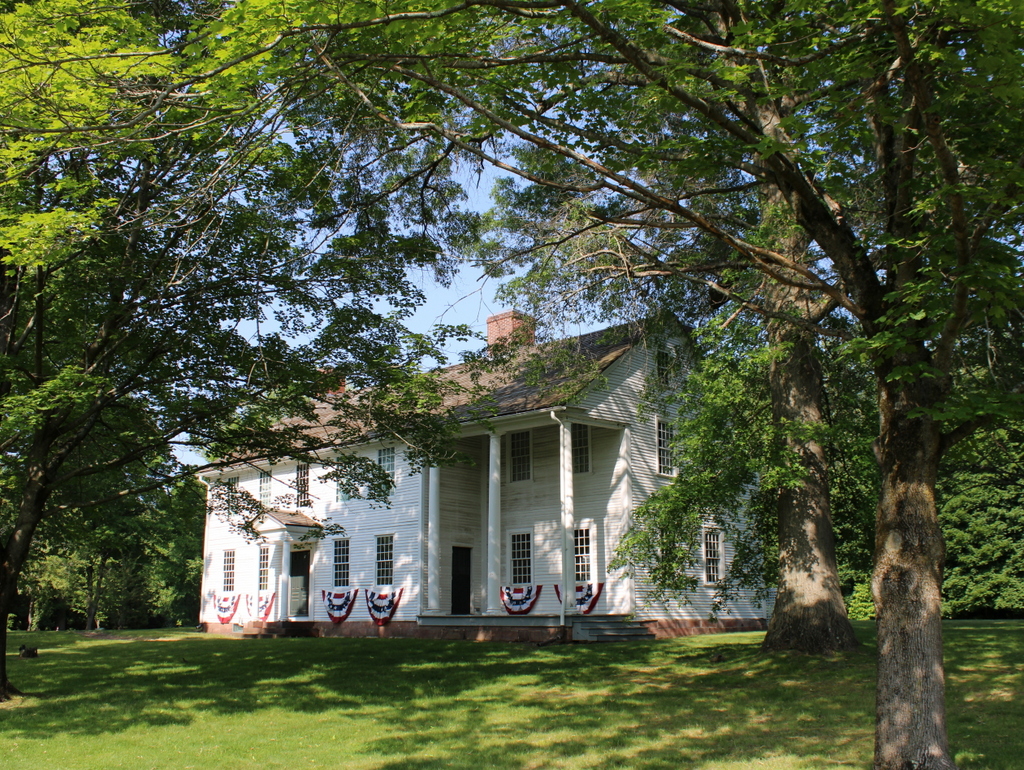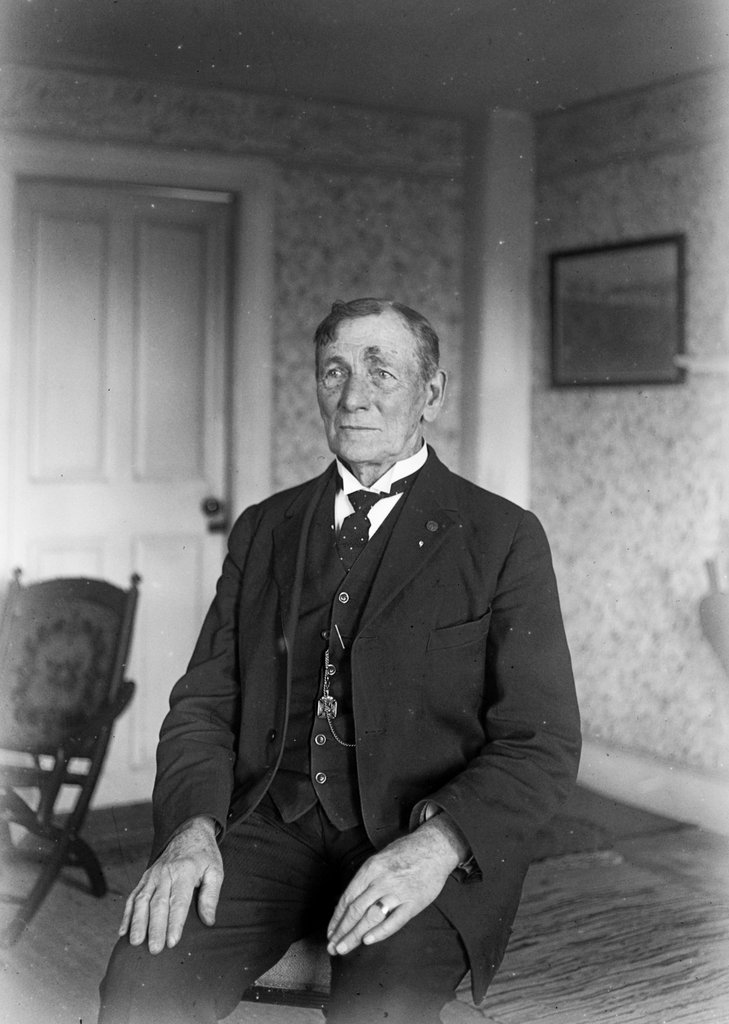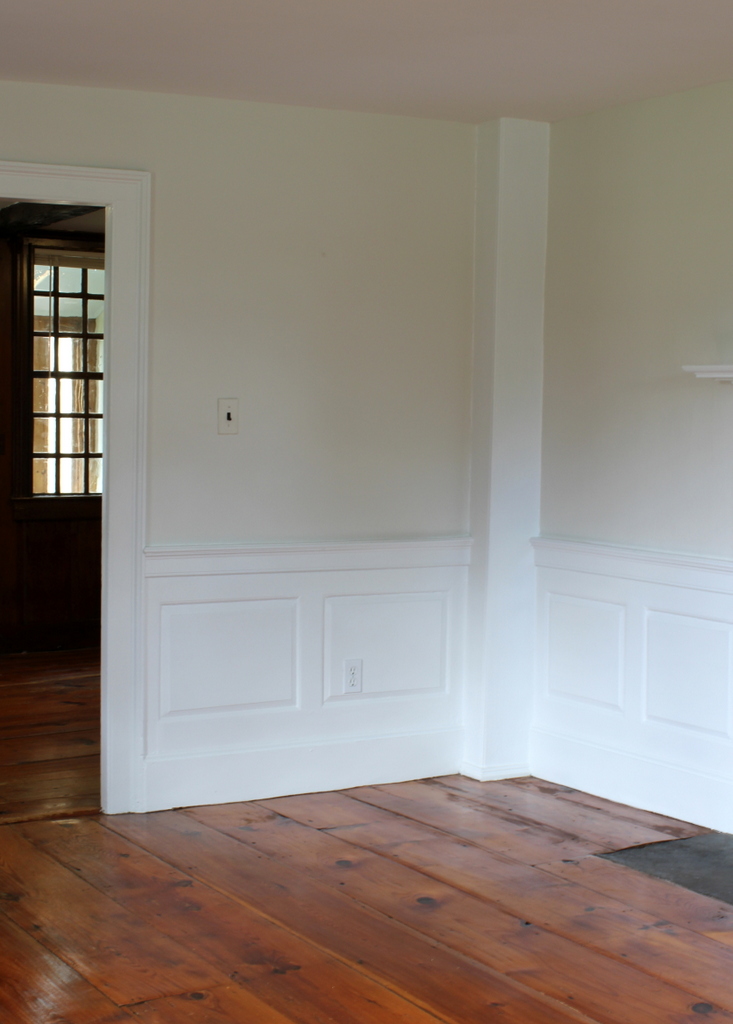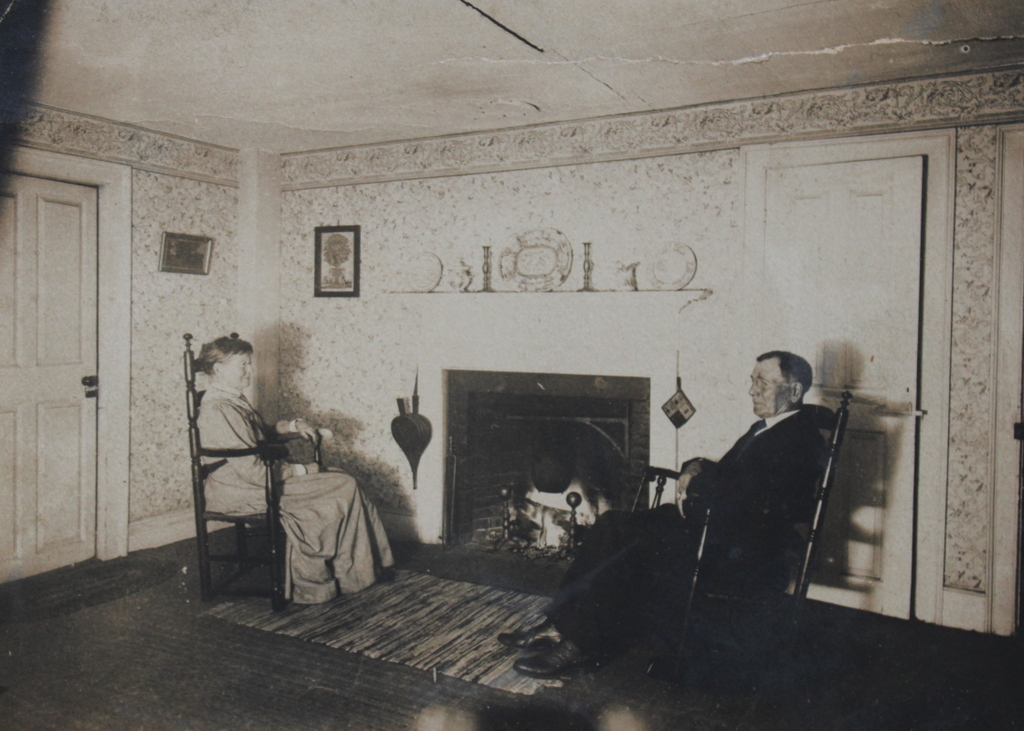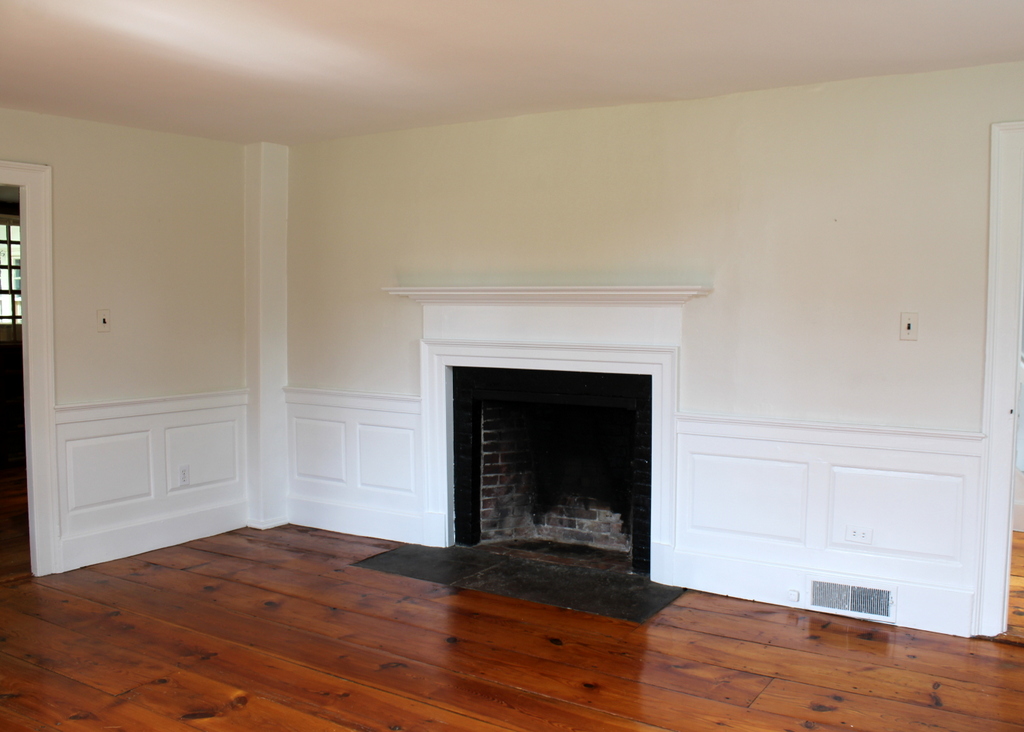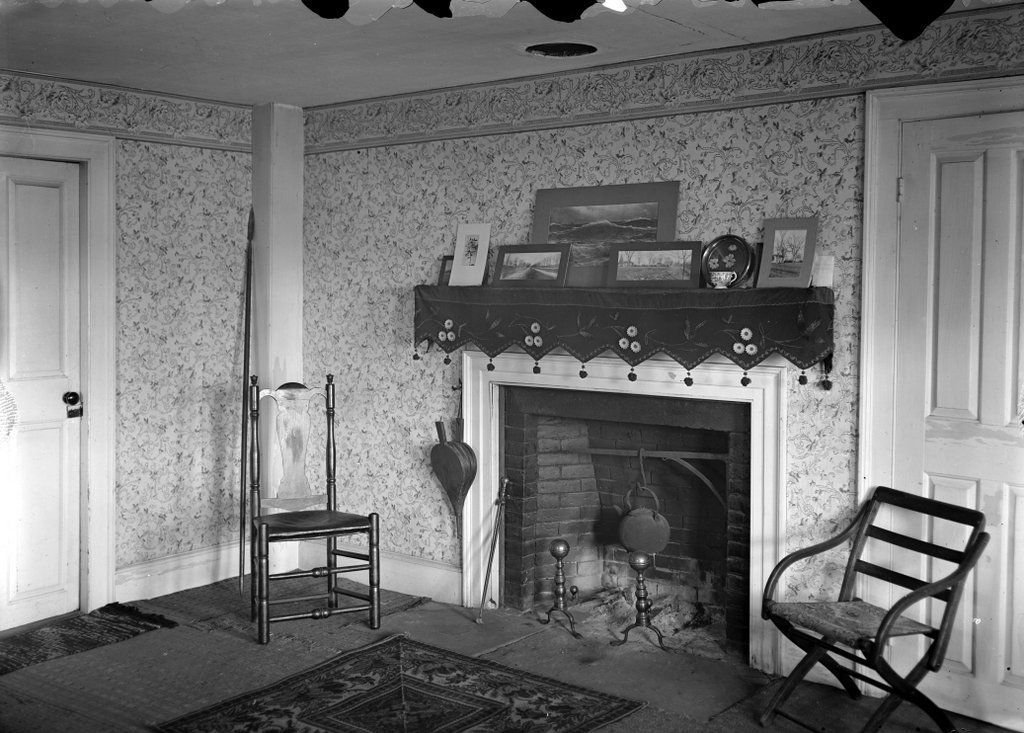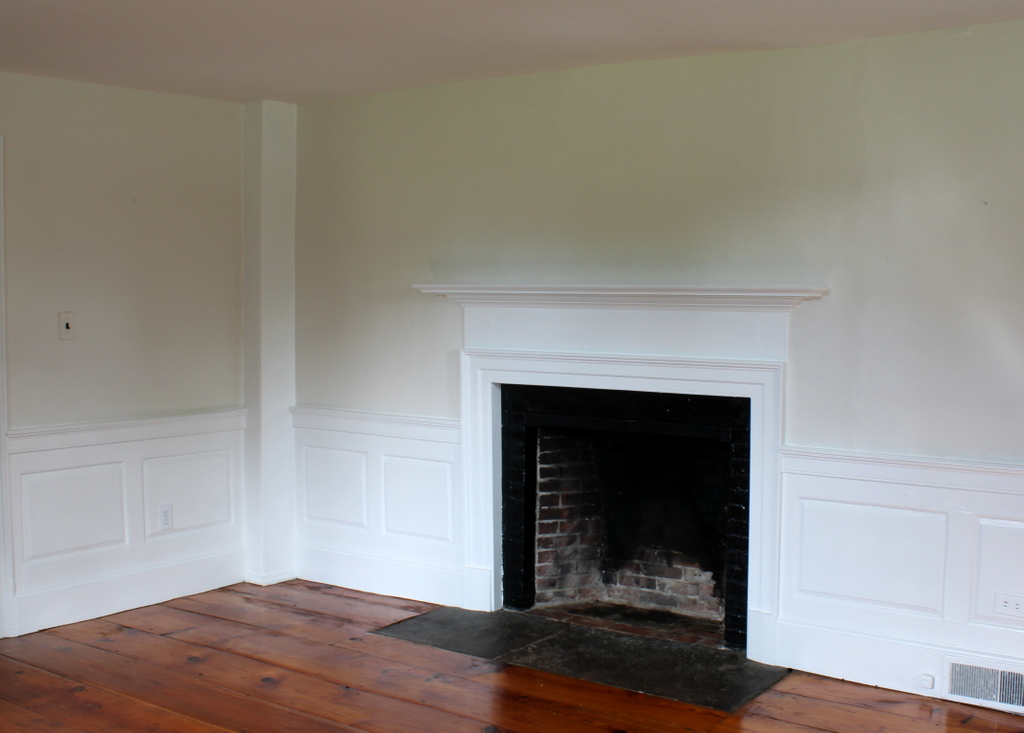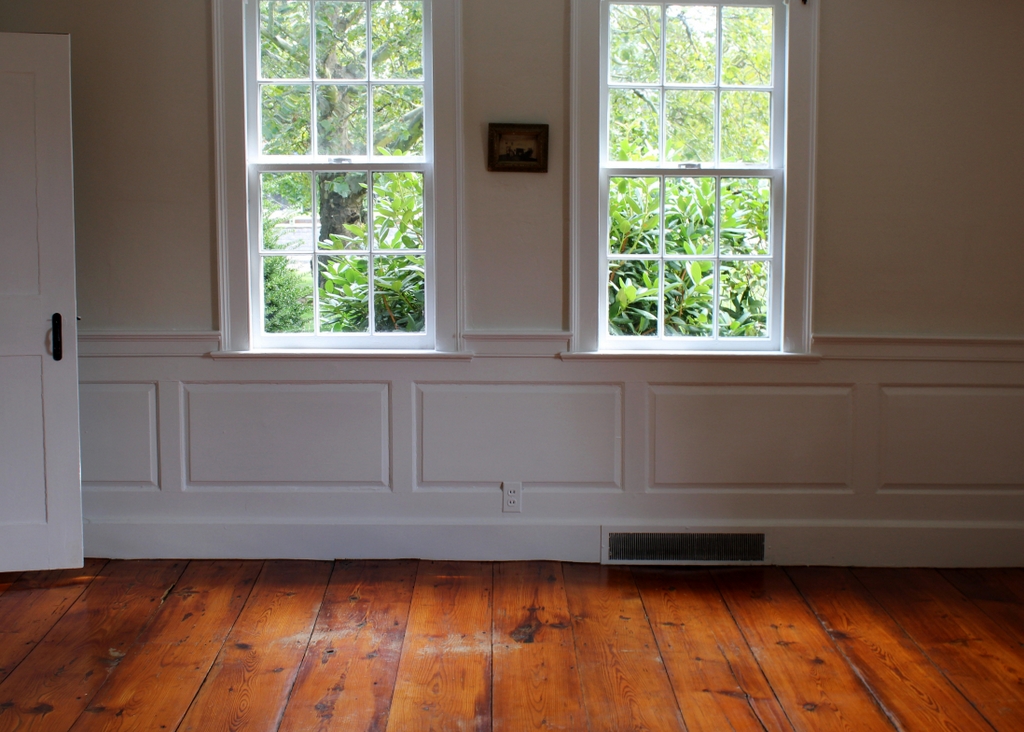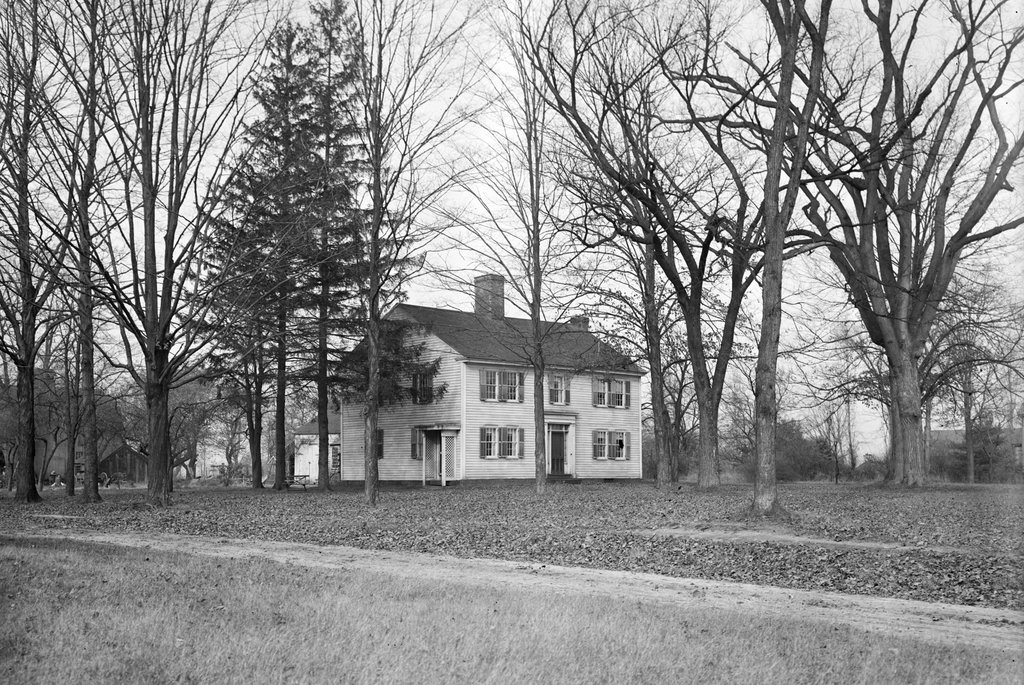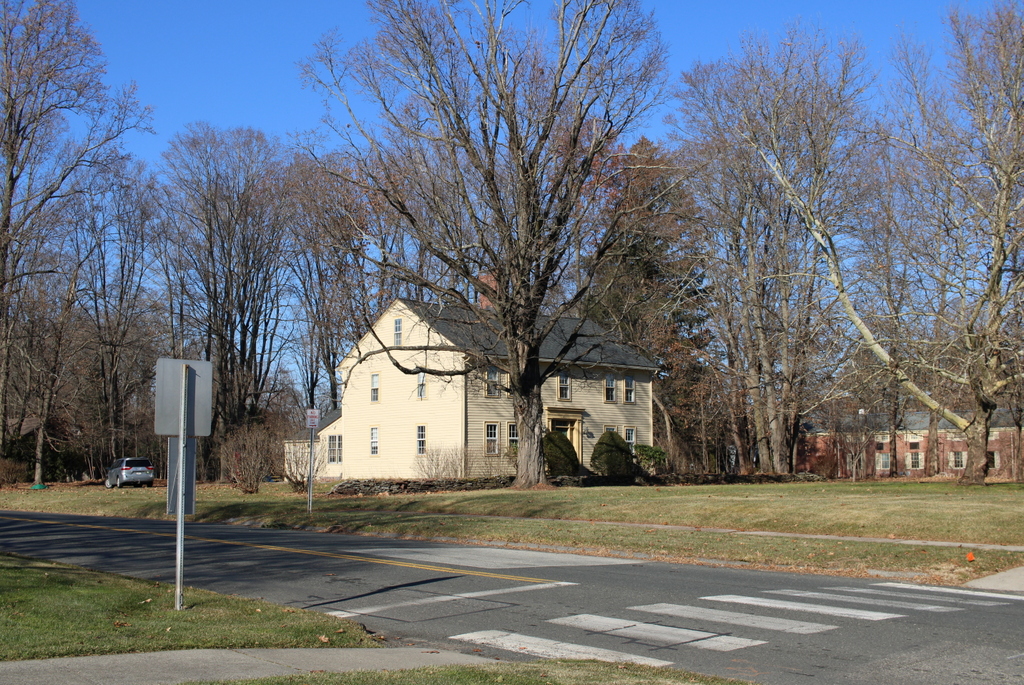The Oliver Ellsworth Homestead at 778 Palisado Avenue in Windsor, around 1900. Image from Connecticut Magazine, Volume VI.
The house in 2023:
As explained in an earlier post, this house was the home of Oliver Ellsworth, a prominent Connecticut politician in the post-Revolution era. The main part of the house was built in 1781, but it was later expanded in 1788 with an addition on the right side, and later in the 19th century with the addition of the columns and porch on the right side. The house is located on the east side of Palisado Avenue in the northeastern part of modern-day Windsor, a few hundred yards to the west of the Connecticut River.
Oliver Ellsworth was born in Windsor in 1745, and he grew up in an earlier house on this site. As a young man he attended Yale and the College of New Jersey (modern-day Princeton), and after graduation he became a lawyer. In 1772 he married Abigail Wolcott, and they had nine children who were born between 1774 and 1791: Abigail, Oliver, Oliver, Martin, William, Frances, Delia, William, and Henry. Ellsworth inherited the family house in the early 1780s, and the original house was evidently demolished in order to build the current one in 1781, although it is possible that a portion of the old one was incorporated into the newer structure. He named the house Elmwood, and planted 13 elm trees in the front yard, representing the original 13 states.
In the meantime, Oliver Ellsworth became involved in politics during the American Revolution, including serving as a Connecticut delegate to the Continental Congress throughout most of the war. After the war he became a state judge, but in 1787 he was selected as a delegate to the Constitutional Convention in Philadelphia, which drafted the current United States Constitution. There, he worked with fellow Connecticut delegate Roger Sherman to create the Connecticut Compromise, establishing the current bicameral federal legislature with proportional representation in the House and equal representation for each state in the Senate.
Ellsworth had to leave the Philadelphia convention before the Constitution was finished, so he did not sign the final draft of it. However, once the Constitution was ratified, he played several important roles in the new government. He was one of Connecticut’s first two senators, serving from 1789 to 1796, and during this time perhaps his most significant contribution was writing the Judiciary Act of 1789. In the Constitution, the structure of the judicial branch was intentionally left vague, to allow Congress to establish courts as they saw fit. This act set the size of the Supreme Court, and it also established a system of lower federal courts and judicial districts.
The first Chief Justice of the United States was John Jay, who served from 1789 to 1795, when he resigned to become governor of New York. George Washington then nominated John Rutledge as the next Chief Justice, and Rutledge served for a few months as a recess appointment. However, the Senate ultimately rejected his appointment, so Washington instead nominated Ellsworth, who was unanimously approved by the Senate. He became Chief Justice on March 8, 1796, and he served in that role for the next four years. At the time, the Supreme Court was not generally seen as being anywhere near as important as the other two branches of the federal government, so there were no landmark cases during Ellsworth’s time, although he did institute the practice of justices issuing a single majority opinion, rather than each justice writing an individual opinion.
In 1799, while Ellsworth was still serving as Chief Justice, President John Adams sent him to France as an envoy, where he negotiated with Napoleon in order to prevent war between the two countries. However, the trip to Europe left Ellsworth in poor health, and he ultimately retired from the court in December 1800. This decision would prove to have far-reaching effects; it came in the closing months of Adams’s presidency, after he had already been defeated for re-election by Thomas Jefferson. However, Adams was still president until March 1801, and as such he nominated John Marshall as Ellsworth’s replacement. Confirmed by the Senate in 1801, Marshall would go on to serve as Chief Justice for the next 34 years, where he played a crucial role in establishing key precedents and upholding Federalist ideals, long after the Federalist party itself had faded into obscurity. Had Ellsworth not retired when he did, his successor would likely have been someone appointed by Thomas Jefferson, which would likely have radically altered the course of American history.
This house remained Oliver Ellsworth’s home throughout his political career, and during this time he entertained visitors such as George Washington and John Adams. Washington’s visit came on October 21, 1789, when he stopped here during his tour of the New England states. He spent an hour here on his way from Hartford to Springfield, writing in his diary:
By promise I was to have Breakfasted at Mr. Ellsworths at Windsor on my way to Springfield, but the Morning proving very wet and the rain not ceasing till past 10 Oclock I did not set out till half after that hour; I called however on Mr. Ellsworth and stay’d there near an hour.
A decade later, on October 3, 1799, John Adams became the second sitting president to visit this house. This occurred exactly a month before Ellsworth departed for France, so it seems likely that much of their visit involved conversation about diplomatic issues and the potential for war with France.
Following his return to America and his retirement from the Supreme Court, Ellsworth came back here to his home in Windsor, where he lived for the rest of his life, until his death in 1807 at the age of 62. The house would remain in his family for nearly a century after his death, and it was still owned by his descendants when the first photo was taken around 1900.
The first photo shows several exterior alterations that had occurred during the 19th century, including the columns and portico on the right side, along with exterior shutters on the windows. Overall, though, it still looked much the same as it did when Oliver Ellsworth lived here a century earlier. There were also many large elm trees in the front yard in the first photo, which were likely the same ones that Ellsworth had planted here.
In 1903, shortly after the first photo was taken, the Ellsworth family donated the house to the Connecticut chapter of the Daughters of the American Revolution. It was then preserved as a museum, and over the years it has seen few exterior changes, aside from removing the exterior shutters. The elm trees that Ellsworth had planted are now long gone, having probably fallen victim to Dutch Elm Disease in the early 20th century, but the house itself still stands as an important Connecticut landmark. It is still owned by the DAR, and it is open periodically for public tours.


